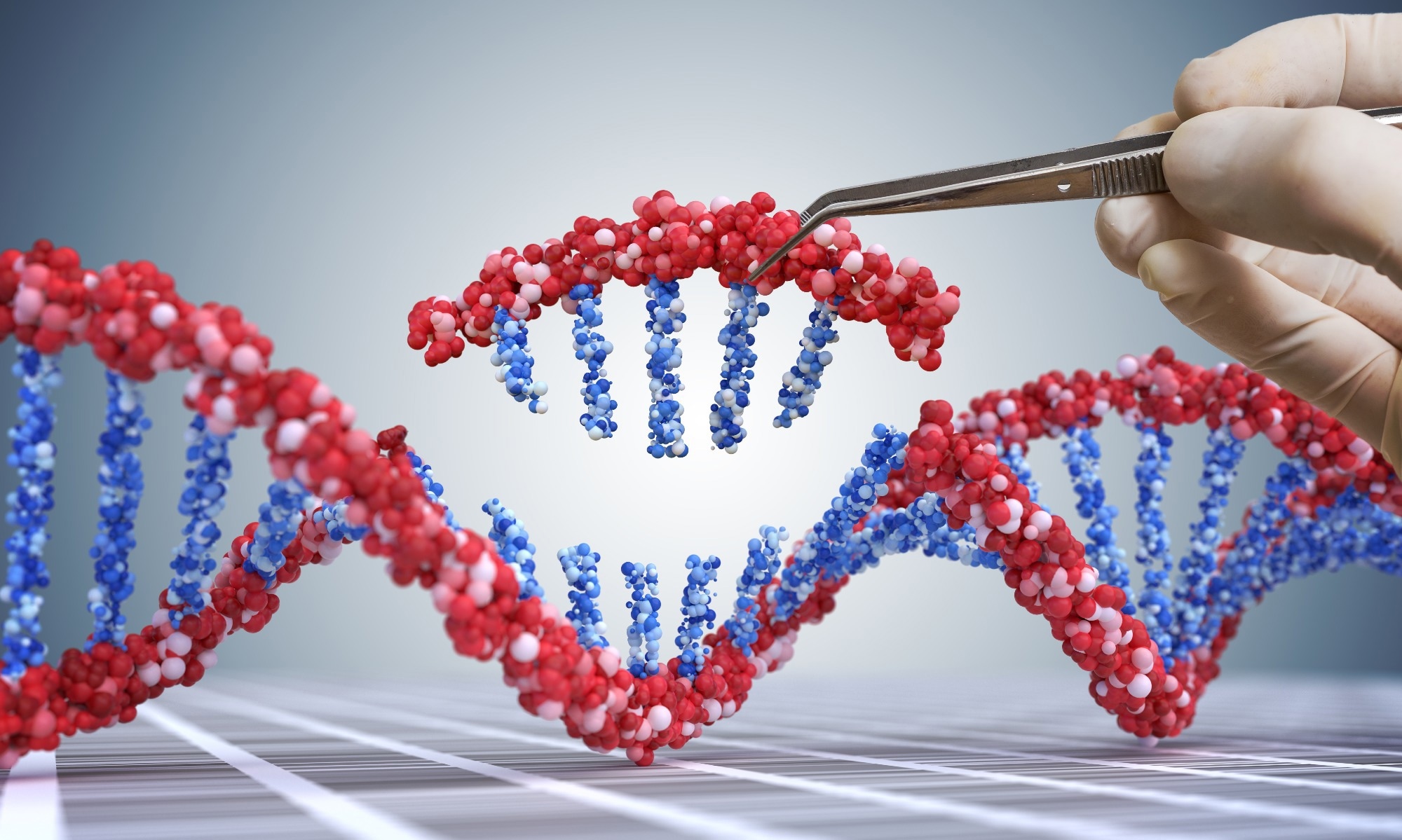In this interview, we delve deep into the pioneering world of xenotransplantation and the evolving landscape of gene editing, with Dr. Wenning Qin, SVP, Innovation & Process Development at eGenesis. Drawing from her vast experience, Dr. Qin shares insights into the challenges, opportunities, and future of xenotransplantation.
Please introduce yourself and tell us about your career.
I am Wenning Qin, SVP, Innovation & Process Development at eGenesis. I joined eGenesis in 2017 and prior to that, was with several other pharmaceutical companies, including Pfizer Inc. and Biogen Inc. By training, I am a molecular biologist. Over the course of my career, I have been focusing on genome engineering.
How has the gene editing landscape evolved over the course of your career, and what emerging technologies or trends do you find particularly promising for future research and applications?
In the 1980s, Dr. Mario Capecchi, Sir Martin Evans and Dr. Oliver Smithies invented the conventional gene targeting technology, making use of the endogenous homologous recombination mechanism to target a specific locus of the genome.
With this technology, scientists can edit mouse embryonic stem cells and grow these cells into a mouse. However, conventional gene targeting is laborious, with very low targeting efficiency. It is also very challenging to work with other species when there is no embryonic stem cell line available.
Zinc finger nuclease and TALEN were subsequently invented, which target at a much higher efficiency. The limitation however is that these two technologies are cumbersome to use and were never popular among the research community.
In 2012, Drs. Emmanuelle Charpentier and Jennifer Doudna discovered CRISPR/Cas9 as a gene editing tool. CRISPR not only enables precise targeting of a genomic locus, it is simple to use and highly efficient. Further evolution of the technology will be in the areas of less off-target effects, delivery of a larger payload into the cells and more efficient targeting into the mammalian genome.
Can you provide an overview of your recent research in the design and testing of a humanized porcine donor for xenotransplantation, and what inspired you to pursue this area of study?
Xenotransplantation is not a recent idea. Doctors and scientists have made attempts at cross-species transplants as early as the 17th century. Due to the 80 million years of evolution separating pigs and humans, porcine organs are seen as foreign by the human recipients. To improve compatibility of porcine organs with the human recipient, there is a lot of “humanization” that needs to be done.
With the advent of CRISPR/Cas9 as a gene editing tool in 2012, we are now able to edit the porcine genome and improve the compatibilities of the porcine donors. In our Nature paper, we detailed some of these molecular incompatibilities, described how we created a humanized porcine donor to address these incompatibilities, and provided data showing the long term, life supporting function of these humanized kidneys when transplanted to cynomolgus monkeys.
There are more than 100,000 patients who are currently registered on the organ wait list in the US alone. However, there are only about 30,000 transplants performed per year. Every day, 17 patients die while waiting for an organ.
The proof of principle study reported in Nature brings us closer to clinical studies involving porcine renal transplantation to solve the worldwide organ shortage crisis.
 Image Credit: David Tadevosian/Shutterstock.com
Image Credit: David Tadevosian/Shutterstock.com
What specific challenges or limitations in the field of xenotransplantation were you aiming to address with this research project?
Over the years, various porcine donors have been engineered. However, they are not ready for clinical use due to various reasons. In our study, we created a porcine donor that is ready for clinical testing. We addressed organ sizes, molecular compatibilities and zoonosis risk.
And on top of that, we achieved proof of principle that engineered kidney provided long term, life supporting function in the non-human primate model. This proof of principle study brings us closer to clinical testing of porcine renal xenotransplantation in humans.
The abstract in your recent research mentions that the porcine donor was engineered with 69 genomic edits. Could you elaborate on some of the key genetic modifications made and their significance in promoting compatibility with human recipients?
Based on data accumulated by the xenotransplantation community over the years, we chose to incorporate 69 genomic edits into the porcine donor. These 69 genomic edits can be grouped into 3 sets.
The first set includes 8 edits, disabling 4 genes critical for synthesis of 3 sugar antigens normally coating the pig cell surface; the second set includes insertion of 7 human genes into a genomic safe harbor site and expression of these genes from the porcine genome. Each of these 7 genes provides a specific function, including protecting the porcine cells from being attacked by the primate immune system, keeping blood flowing and transporting oxygen and nutrients to the organ, and preventing cells going into programmed cell death; the third and last group of edits inactivates the 59 copies of the porcine endogenous retrovirus to mitigate the risk of viral transmission from pigs to humans.
Collectively, these edits work to prevent rejection of the porcine organ by the primate immune system and lessen the risk of zoonosis.
 Image Credit: vchal/Shutterstock.com
Image Credit: vchal/Shutterstock.com
Could you discuss the significance of the results in terms of progressing towards clinical trials of genetically engineered porcine renal grafts for human transplantation?
Data presented in this study show that the engineered porcine kidney is safe and efficacious when transplanted into the nonhuman primate. These data bring us closer to clinical testing of porcine kidneys compatible for human transplantation.
How do you envision the future of xenotransplantation and the potential impact of your research on addressing the organ shortage crisis for human transplantation?
Xenotransplantation may offer hope for individuals in need of an organ transplant. In addition, one advantage of xenotransplantation, as compared with allotransplantation, is the opportunity to genetically engineer a donor organ. Therefore, to promote graft survival, the burden may be shifted from a heavy immune suppression regimen administered to the recipient to a more optimal graft donated from a genetically engineered porcine donor.
We have several programs ongoing right now, including extracorporeal liver perfusion, pediatric and adult heart transplantation, and kidney transplantation. We will generate data and work with the agency to move these programs to human testing.
What are the next steps in your research, and are there any specific challenges or areas of focus that you plan to explore further in the context of xenotransplantation?
We will continue to improve and evolve the next iteration of the porcine donor. These may include additional beneficial human genes and a porcine donor with an immune tolerance feature.
Could you explain any ethical or regulatory considerations associated with xenotransplantation research, especially in the context of moving towards clinical trials with genetically engineered porcine renal grafts?
Ensuring the welfare of our porcine donors and the safety of our patients will always be our highest priority. Organ shortage is a global healthcare crisis that continues to worsen. Cross-species organ transplantation remains the most promising solution to saving the lives of patients with organ failure.
Collaboration seems crucial in such complex and groundbreaking research. Can you describe the multidisciplinary nature of your team and the contributions of various experts in making this project a success?
To make such a large project a success, we brought together subject matter experts in multiple areas from 5 institutions (MGH, Duke, UM Madison, Harvard and eGenesis) who believe in the mission and work to make things happen:
- Visionaries: team members who envision a world where there is no shortage of organ supply and are determined to make it a medical reality.
- Synthetic biology: team members who assemble a large payload carrying multiple human transgenes.
- Gene editing: team members who understand genetic engineering and bring about these genomic edits.
- Porcine donor cloning: team members who love to work with animals and are expert in pig cloning.
- Next generation sequencing (NGS): team members who understand the various sequencing platforms and use these platforms to shed light on the genome and how it has been impacted by gene editing.
- Computational biology: team members who make sense of the sequencing data and provide insights into the gene edited genome.
- Bioimaging: team members who love colors and are passionate about IHC.
- Pathology: team members who review and interpret pathology reports.
- Immunology: team members who understand T cells, B cells, innate immunity, and transplant biology and the role they play in promoting organ survival.
- Renal transplantation: team members who perform allotransplantation saving lives and porcine to NHP xenotransplantation with the goal of saving more lives in the near future.
- Animal care: team members who love and take care of animals.
- Project management: team members who organize meetings, collect and analyze data.
We were fortunate to have assembled a team of people who are passionate about science, incredibly driven, and hugely productive. We all understand this is a once in a lifetime opportunity to conduct impactful, breakthrough science and are proud to contribute our part in advancing the field closer to human clinical studies.
What potential applications and benefits do you see for your research beyond xenotransplantation, in areas such as organ regeneration or other medical fields?
Our report may be a case study of the power of CRISPR/Cas9-mediated gene editing. It may provide a reference for gene therapy, cell therapy, organ engineering and genome engineering of large animals. In this study, we used CRISPR/Cas9-mediated non homologous end joining (NHEJ) to concurrently edit 59 genomic loci and inactivate 59 copies of the porcine endogenous retrovirus.
In addition, we employed CRISPR/Cas9-mediaed homology directed repair (HDR) to insert a landing pad into a genomic safe harbor site. To achieve expression of multiple transgenes, we resorted to a polycistronic design and were able to achieve expression of all seven human transgenes.
It is also a showcase of the power of next generation sequencing (NGS). Given the relatively large number of genomic edits, one may expect off target impact on the genome. We employed a suite of technologies, including long read sequencing and direct RNA-seq, to interrogate the cells and pigs and make sure that every step of the way, we know what we have.
It is a testimony what we can accomplish, when we come together as a team, believing in the mission and delivering on the goals.
Where can readers find more information?
About Wenning Qin, Ph.D
 Dr. Wenning Qin is SVP, Innovation & Process Development at eGenesis. In her current role, she is responsible for the overall strategy of genome engineering and process development for eGenesis. Dr. Qin earned a B.S. in Public Health and a M.S. in Cardiovascular Physiology from Tongji Medical University, and a Ph.D. in cardiovascular pharmacology from Southern Illinois University.
Dr. Wenning Qin is SVP, Innovation & Process Development at eGenesis. In her current role, she is responsible for the overall strategy of genome engineering and process development for eGenesis. Dr. Qin earned a B.S. in Public Health and a M.S. in Cardiovascular Physiology from Tongji Medical University, and a Ph.D. in cardiovascular pharmacology from Southern Illinois University.
She completed postdoctoral training in transcriptional regulation of gene expression at Washington University School of Medicine in St. Louis. She has over 25 years of experience in gene editing and scientific leadership spanning Monsanto Life Sciences, Pharmacia Corporation, Pfizer Inc., Biogen Inc., and the Jackson Laboratory.
Many programs Dr. Qin managed and contributed to – across oncology, neuroscience, cardiovascular diseases – have advanced to IND and approval. Across her career, Dr. Qin has specialized in genome editing in model organisms, including rodent and porcine models, employing synthetic biology, conventional gene targeting as well as the CRISPR-Cas9 genome editing technology.